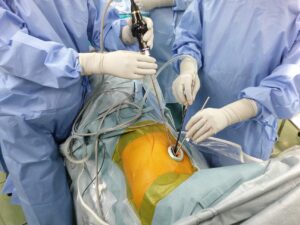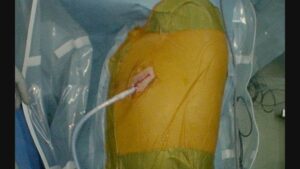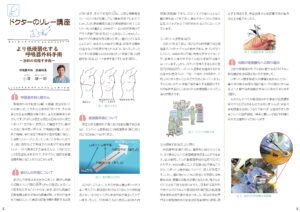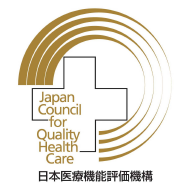Respiratory surgery
Doctor introduction
* Side-scrolling is possible
| Title, etc. | Expertise | Graduation year | Qualifications/Licenses | |
|---|---|---|---|---|
| Mitsuaki Sakai | Ibaraki Regional Cancer Center manager of centre Vice-president | Respiratory surgery | 1995 | Japanese Society of Surgical Surgery Specialist/Preceptor Respiratory Surgeon, Joint Committee of Respiratory Surgeons Japanese Respiratory Endoscopy Society Bronchoscopist/Preceptor Japanese Board of Cancer Therapy Certified Cancer Therapy Physician |
| Yuichiro Ozawa | Head of medical department | Respiratory surgery | 1999 | Japanese Society of Surgical Surgery Specialist/Preceptor Respiratory Surgeon, Joint Committee of Respiratory Surgeons Japanese Respiratory Endoscopy Society Bronchoscopist/Preceptor 日本呼吸器学习呼吸器専門医 Japanese Board of Cancer Therapy Certified Cancer Therapy Physician Thoracoscopic safety technology certified doctor Japanese Society of Endoscopic Surgery (Respiratory Surgery) Technically Certified Physician |
| Kentaro Araki | 2014 | 日本 科学学体学乐 咖啡専門医 Respiratory Surgeon, Joint Committee of Respiratory Surgeons 日本呼吸器内視鏡学乐気管支鏡専門医 |
Respiratory Surgery Efforts
With the opening of the Ibaraki Regional Cancer Center in 1999, respiratory surgery was newly established as a specialized clinical department.20Over the years have passed.2022Years4The head of the medical department changed in January, and it became a new system.Our department is a clinical department that mainly performs surgical treatment for diseases of the chest.Target diseases are broadly divided into malignant and benign diseases. The former includes lung cancer, metastatic lung tumors, and mediastinal tumors, while the latter includes cystic diseases such as pneumothorax, empyema, and lung abscess, which are resistant to medical treatment. chest infections, etc.
In lung cancer treatment, as a cancer center, in order to perform advanced and safe cancer treatment, "Thoracic Cancer Board(thoracic malignant disease study group)”, and examines multidisciplinary treatment of surgery, anticancer drugs, and radiation for each case, and examines lung cancer pathological findings.Surgery actively performs thoracoscopic surgery (endoscopic surgery), and currently90%All of the above are thoracoscopic surgeries.In addition, with the aim of further reducing the burden on patients, we have started introducing single-incision thoracoscopic surgery, which has small wounds and a small number of wounds. (For information on single-incision thoracoscopic surgery, please refer to our public relations magazine "Approach".86Please see No.click the imagePDFCan be output as a file. )
*Click the image to print as a PDF file.
Single-incision thoracoscopic surgery may not be indicated depending on the medical condition of each patient. We are conducting daily medical treatment in pursuit of surgery that reduces the burden on patients).
We will continue to strive to provide patient-centered team medical care more than ever.
Fig. 1 Photograph of intraoperative wound site of spontaneous pneumothorax in our department
図2 Photograph of the wound after single-incision thoracoscopic surgery
A word to patients
Lung cancer is a fairly advanced disease when the cancer causes symptoms.
Advances in diagnostic imaging technology have made it possible to detect lung cancer at an earlier stage.Get regular checkups at your workplace or residents, and if any abnormalities are found in the checkup, get a detailed examination immediately.
For patients considering surgery for spontaneous pneumothorax
10s,20In surgery for spontaneous pneumothorax, which frequently occurs in the XNUMXs, we perform single-incision thoracoscopic surgery.Please contact us anytime if you are considering surgical treatment.
Medical Statistics (2022)
* Side-scrolling is possible
| 2022 | 2021 | |
|---|---|---|
| Number of inpatients | 166 | 140 |
| Number of bronchoscopies and interventions | 18 | 7 |
surgery statistics
* Side-scrolling is possible
| 2022 | 2021 | |
|---|---|---|
| benign lung tumor | 2 (2) | 4 (4) |
| primary lung malignancy | 76 (75) | 73 (58) |
| A. lung cancer | 72 (71) | 73 (58) |
| B. sarcoma | 0 | 0 |
| C.AAH | 0 | 0 |
| D. Lymphoma | 0 | 0 |
| E.Other | 4 | 0 |
| metastatic lung tumor | 5 (4) | 6 (6) |
| Tracheal tumor | 0 | 0 |
| pleural tumor | 0 | 0 |
| chest wall tumor | 2 (2) | 2 (2) |
| mediastinal tumor | 5 (5) | 5 (5) |
| Myasthenia gravis | 0 | 0 |
| Non-neoplastic benign lung disease | 67 (65) | 35 (34) |
| A. Inflammatory lung disease | 5 (5) | 3 (3) |
| B. Empyema | 10 (8) | 4 (3) |
| C. Descending necrotizing mediastinitis | 0 | 0 |
| D. Cystic lung disease | 0 | 0 |
| E. Pneumothorax | 52 (52) | 27 (27) |
| F. Thoracic Abnormalities | 0 | 0 |
| G. Diaphragmatic Hernia | 0 | 0 |
| H. Thoracic Trauma | 0 | 1 (1) |
| I. Other Benign Lung Diseases | ||
| Lung transplantation | 0 | 0 |
| Other surgery | 12 (0) | 14 (0) |
| Total | 169 (153) | 139 (109) |
*( ) indicates the number of thoracoscopic surgeries







